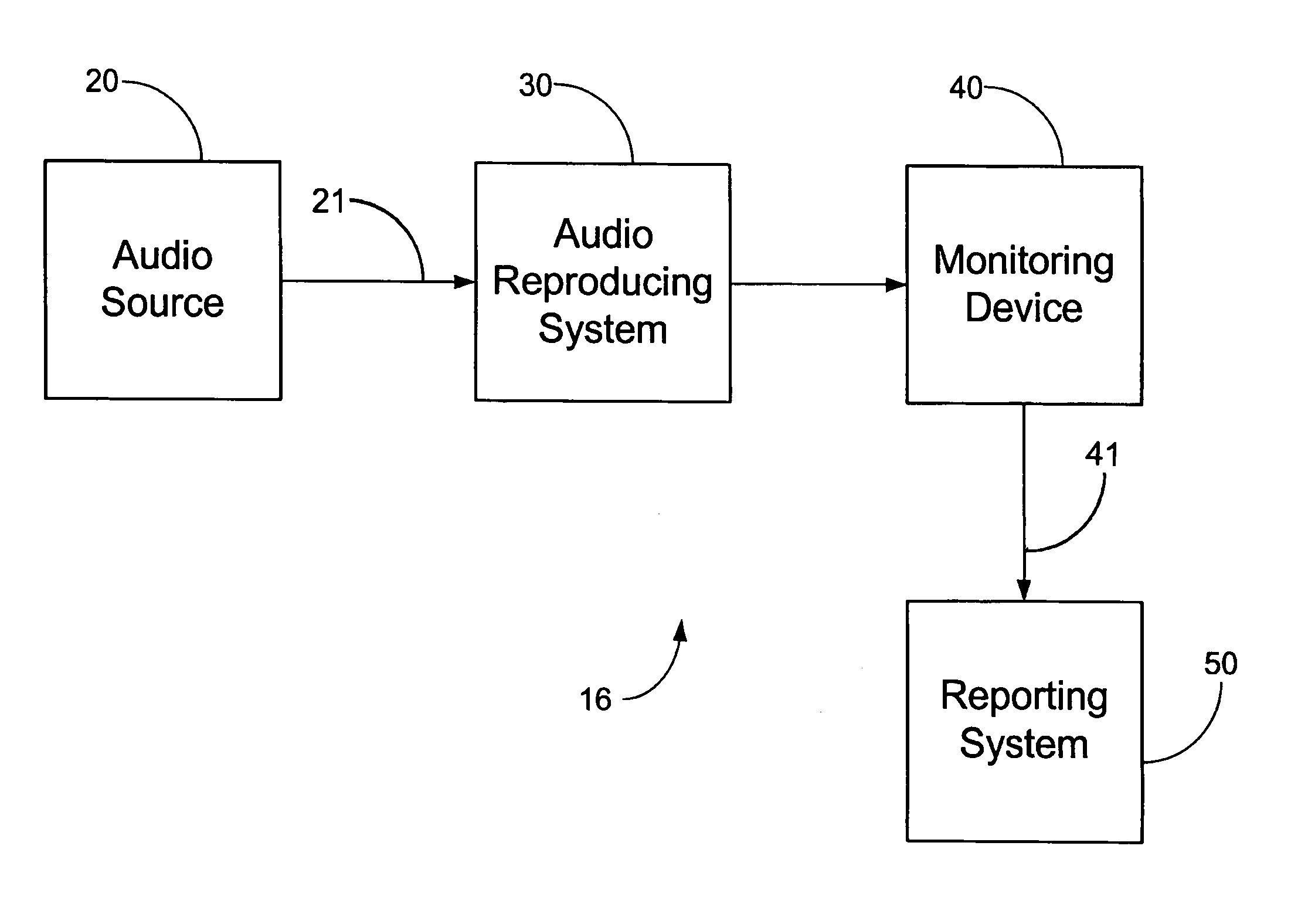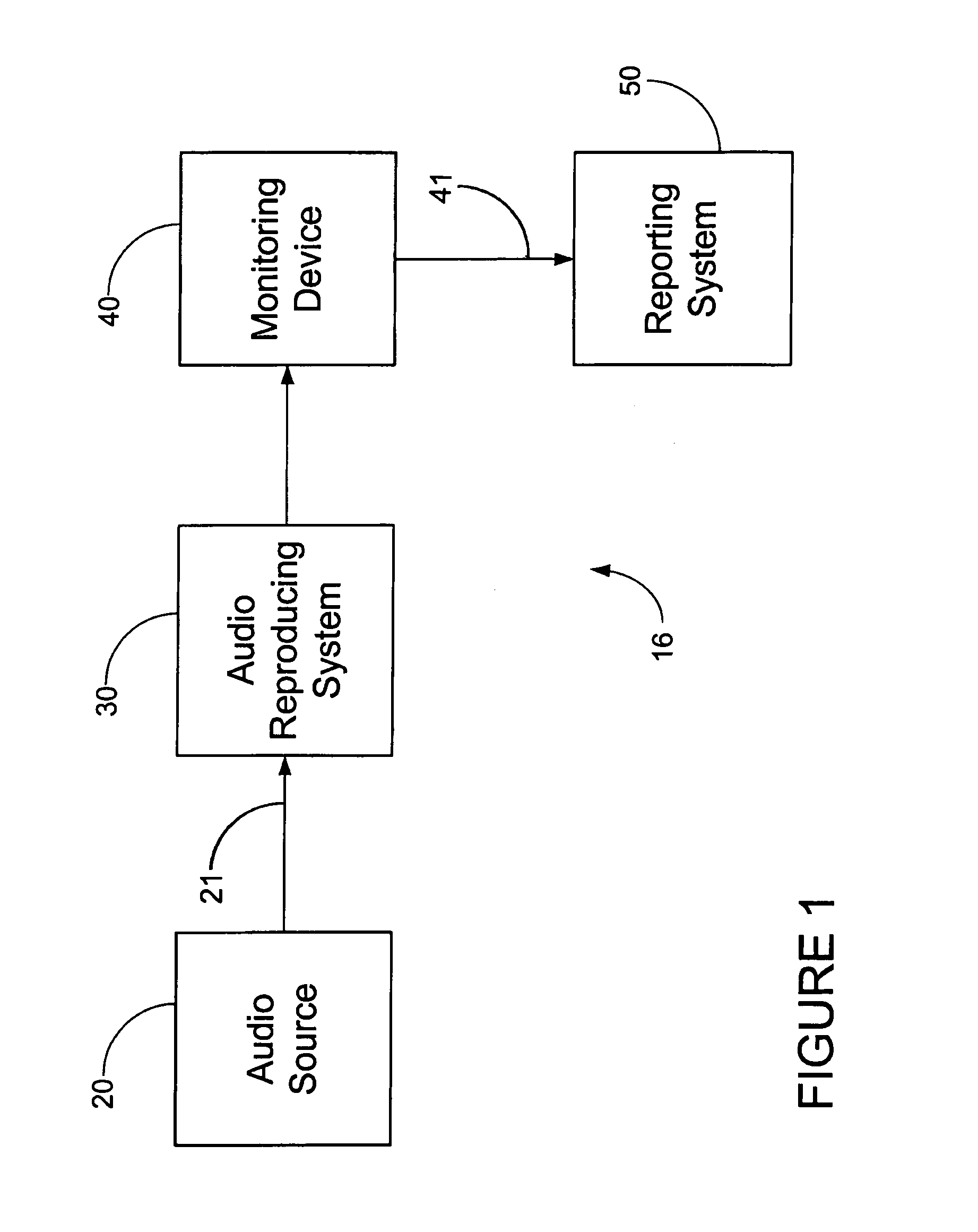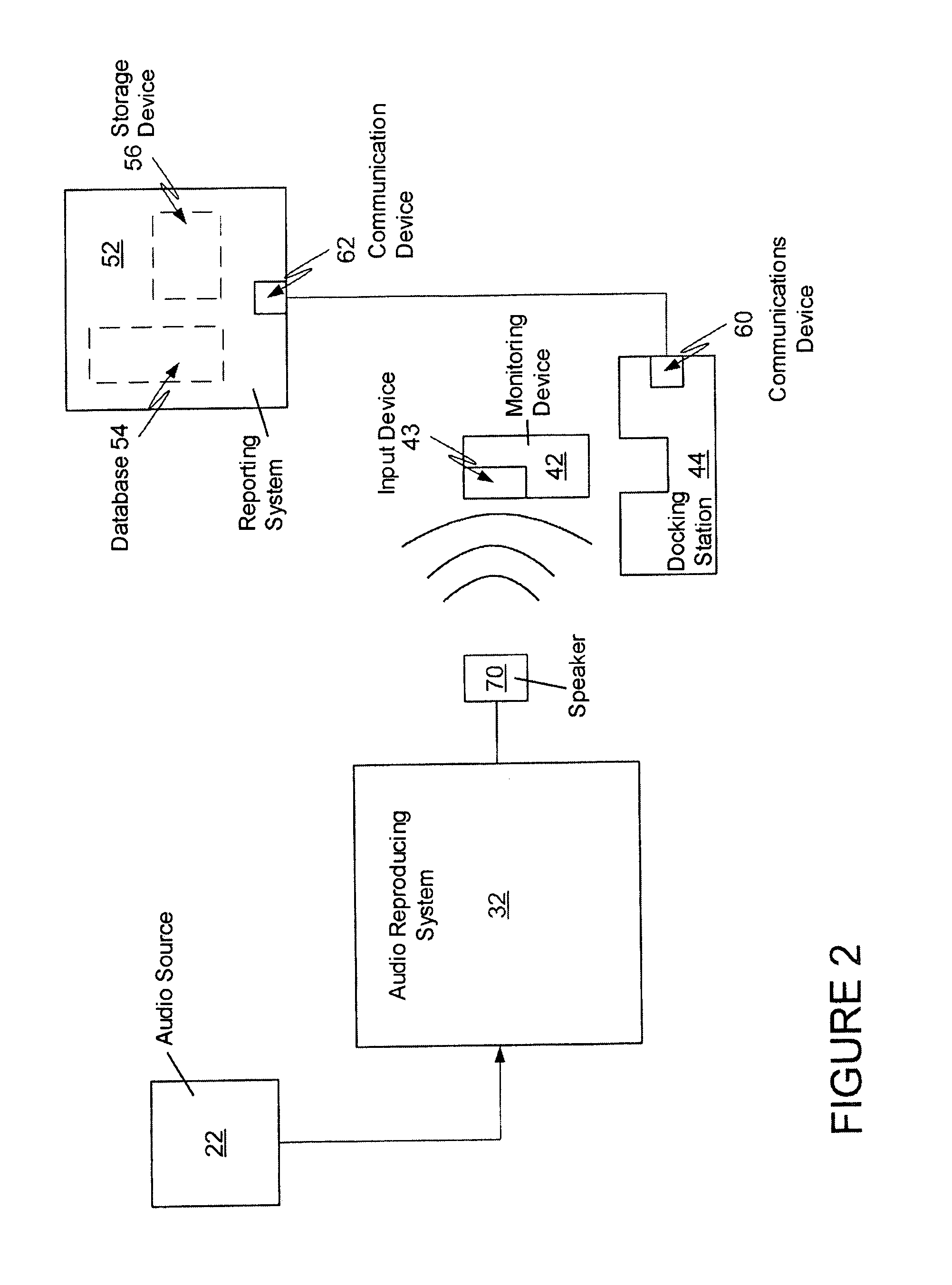Audio data receipt/exposure measurement with code monitoring and signature extraction
a technology for audio data and receipt/exposure measurement, applied in the field of audio data receipt/exposure measurement with code monitoring and signature extraction, can solve the problems of increasing economic impracticality, requiring a tremendous amount of data processing, and complicated the task of measuring audience receipt of individual program segments
- Summary
- Abstract
- Description
- Claims
- Application Information
AI Technical Summary
Benefits of technology
Problems solved by technology
Method used
Image
Examples
Embodiment Construction
[0053]FIG. 1 illustrates various embodiments of a system 16 including an implementation of the present invention for gathering data reflecting receipt of and / or exposure to audio data. The system 16 includes an audio source 20 that communicates audio data to an audio reproducing system 30. While source 20 and system 30 are shown as separate boxes in FIG. 1, this illustration serves only to represent the path of the audio data, and not necessarily the physical arrangement of the devices. For example, the source 20 and the system 30 may be located either at a single location or at separate locations remote from each other. Further, the source 20 and the system 30 may be, or be located within, separate devices coupled to each other, either permanently or temporarily / intermittently, or one may be a peripheral of the other or of a device of which the other is a part, or both may be located within a single device, as will be further explained below.
[0054]The particular audio data to be mo...
PUM
 Login to View More
Login to View More Abstract
Description
Claims
Application Information
 Login to View More
Login to View More - R&D
- Intellectual Property
- Life Sciences
- Materials
- Tech Scout
- Unparalleled Data Quality
- Higher Quality Content
- 60% Fewer Hallucinations
Browse by: Latest US Patents, China's latest patents, Technical Efficacy Thesaurus, Application Domain, Technology Topic, Popular Technical Reports.
© 2025 PatSnap. All rights reserved.Legal|Privacy policy|Modern Slavery Act Transparency Statement|Sitemap|About US| Contact US: help@patsnap.com



